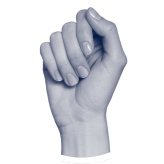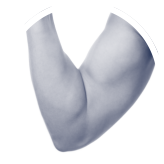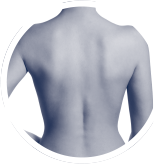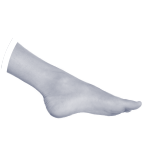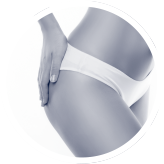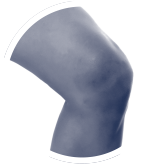
As a sports orthopaedic surgeon, I see and treat athletes of all ages and at all levels and have been lucky enough to be involved in the management of elite athlete’s injuries. Although this has always been part of my career goal, what got me there was the desire to dispel the myth that sports medicine was better abroad, particularly in the United States. The media sports pages still declare that our premiership footballers, for example, have jetted off to the US or Germany to see a top specialist for a given injury. Historically, these countries have offered superior treatment for elite athletes; I saw this first-hand as I visited such clinics in the US as part of my myth-dispelling mission. As sports medicine and surgery develop in this country, I believe that the UK is just as adept in elite athlete injury management, but where we excel is that this level of expertise is increasingly available to sports participants of all levels.
The benefits of participating in regular sport or exercise are well known. Most of us are aware that frequent exercise is good for our health and, more importantly, helps us stay healthy for longer. Furthermore, in 2014 the government published evidence-based guidelines on physical activity. In 2019, a subsequent report by UK Chief Medical Officers (Physical Activity Guidelines) affirmed suggestions that being active every day provides a foundation for a healthier and happier life.
Since the start of the pandemic, a greater percentage of the population has engaged in some form of exercise. Our society’s global consciousness has shifted toward a greener existence contributing to the current psyche on exercise, as the bicycle or our own two feet become increasingly popular daily transport modes. Moreover, this wave of enthusiasm for staying fit is sweeping over people of all ages, collecting more significant numbers as it does so. The success over the last year of many of our national sports teams and athletes will hopefully provide the driving force to sustain the interest into the future.
It makes sense that injuries arising from sport or exercise-related activity are becoming more prevalent. As this article goes out, thousands are in the final days of their training and preparation for the gruelling London marathon. Still, every year, injury strikes for the unlucky minority, quashing ambitions and preventing participation. So if, as medical professionals, we see more injuries through increased exercise and sport participation, are we getting any better at treating them? In my opinion, the answer to that question is a resounding yes, and I’ll tell you why.
The field of sports medicine is evolving, and it is this change that is driving positive change and progress in the management of these injuries. The speciality of Sports and Exercise Medicine became a recognised speciality within the NHS in 2005, heralding a new era within medicine as it offers many advantages to health care as a whole. Then after the success of the London Olympics in 2012, the Department of Health invested in new, state of the art facilities – The National Centre for Sport and Exercise Medicine. The NCSEM delivers education, research and clinical services from three separate hubs across the country.
The challenges of the diagnosis and management of sports injuries, presents the opportunity to improve musculoskeletal care through advances in diagnostics, new medical and surgical approaches to promote healing and repair and enhanced rehabilitation strategies. Learning about human responses to exercise are more rewarding than at rest, and furthering the understanding of the athlete’s response to physiological and psychological stress can provide valuable insights into the models of health and disease. No longer is sports medicine viewed as looking after professional athletes or teams, but more as using exercise and activity promotion as a tool to treat pathological conditions and diseases.
But what about those injuries sustained during sport and training I hear all the recreational athletes and weekend warriors cry? Well, sports injuries fall into two main categories:
- Overuse – repetitive demand over time
- Trauma – isolated traumatic injury usually high energy
Most are overuse injuries: tissue damage that results from repetitive demand over time. Tissues adapt to the stresses placed on them over time. Mechanical fatigue within soft tissues results in characteristic changes; this fatigue is theorised to initially lead to adaptations of these tissues, but as they adapt, they can incur injury unless they have appropriate time to heal. The rate of injury simply exceeds the rate of adaptation. Changes in training patterns, frequency, and types of training and poor biomechanics are some of the factors that can affect the rate of injury detrimentally. The dreaded shin splints are a classic example. Inevitable cessation of activity whilst the injury is treated followed by extensive rehabilitation and conditioning, including training regime changes, before a gradual return to activity, often makes the recovery process from sports injuries long and frustrating.
No wonder then that the focus has switched to prevention. Patient education is a key step to prevention, and I believe there are more outlets for this type of specialist advice than ever before. Sports clinics are springing up in every major town and city, not only populated by the obligatory physiotherapist but by a raft of specialists in various fields (nutritionists, podiatrists, orthotists, physiologists, strength and conditioning coaches, sports physicians and specialists in alternative therapies to name just a few), to assess, analyse and guide you through the prevention process or if you are unlucky enough, the management plan for your sports injury. This holistic approach to sports injuries is becoming more present in NHS hospitals, thanks to the recognition of sports medicine as a speciality in its own right. Accessibility transform treatment and encourage development of the field. I believe as health providers, we are well equipped for future demand in this regard.
I myself am an orthopaedic surgeon, specialising in the treatment of sports injuries of the hip, knee that require surgery. Overuse injuries seldom require my intervention, but the flip side of sports injuries, the traumatic injuries, e.g. knee ligament ruptures often require my input and expertise. You may find it surprising that these make up the minority of injuries sustained during sport, but they are the ones that make the back pages of newspapers and, more importantly, make it into my clinic via A & E departments across the country.
The field of orthopaedic sports medicine has evolved at a breakneck pace since the advent of keyhole surgery of joints (arthroscopy) since the 1980’s. I use arthroscopy to reconstruct soft tissue (cartilage, ligament, tendon and bone) injuries in a minimally invasive manner, with increased accuracy and utilising the latest biomaterials. This technique confers the advantages of shorter recovery times, fewer complications and less time off work and more importantly, less time away from sport or exercise. Most arthroscopic surgery is performed as day case surgery. Outcome is better too in most circumstances when compared to the more invasive open surgeries of the past. My aim is joint preservation as opposed to joint replacement, if possible.
Undoubtedly our understanding of injury, healing and repair, coupled with the great strides in technology that have been made over the last twenty years have facilitated this progress. Importantly though, we continue to make advances that will change the face of sports medicine and surgery in the future.
So this weekend, as you lace up your running shoes or strap on your shin pads, should you be unlucky enough to get injured, rest assured, that sports medicine is not just for the elite athlete, it’s for you too!


